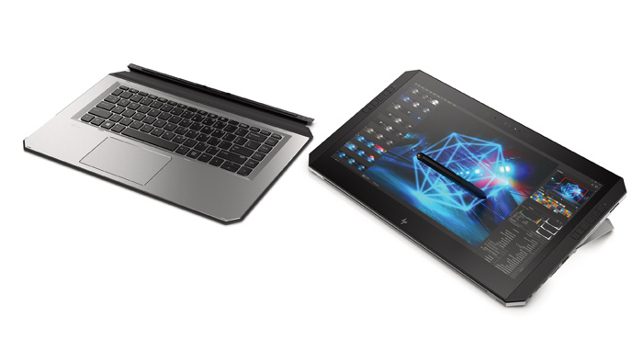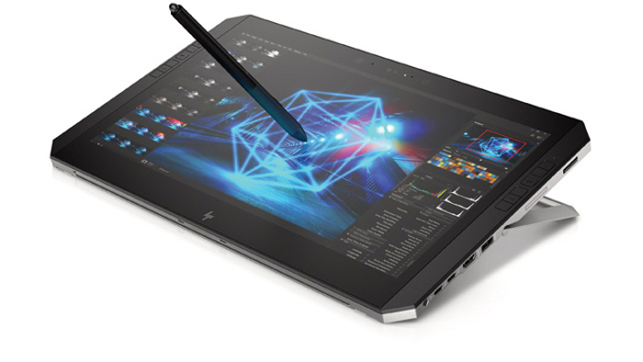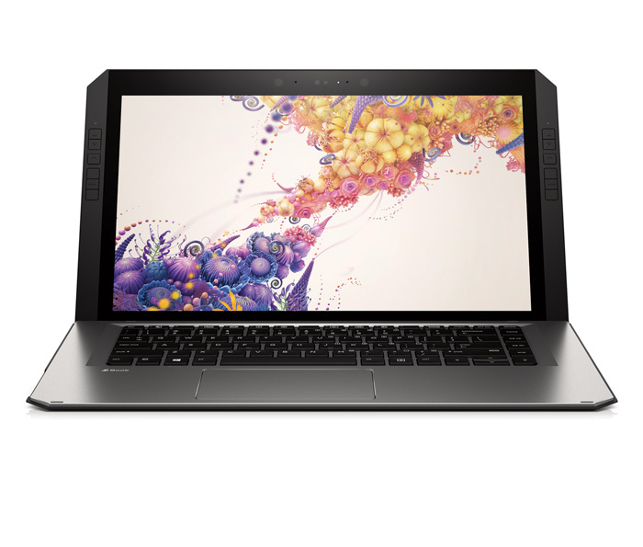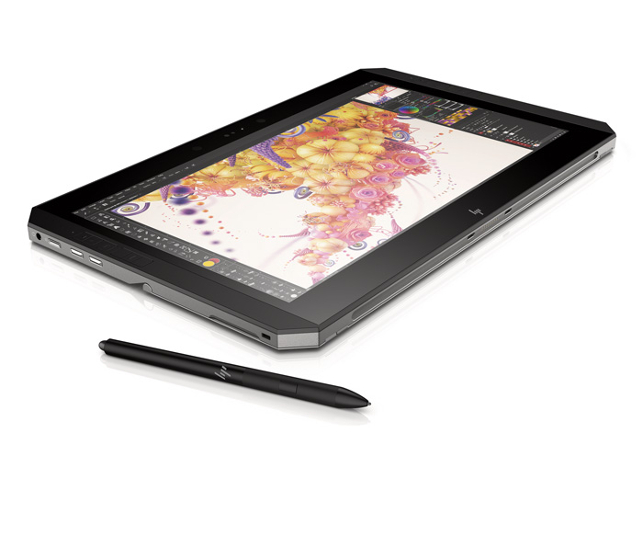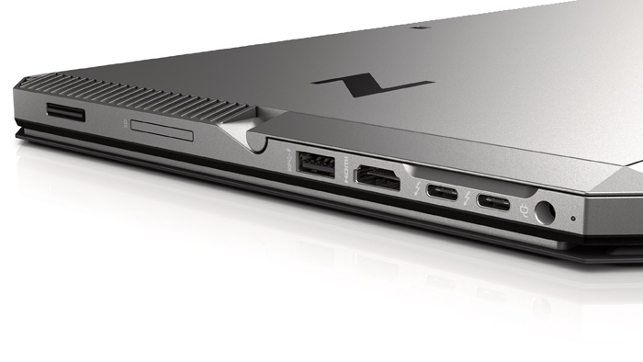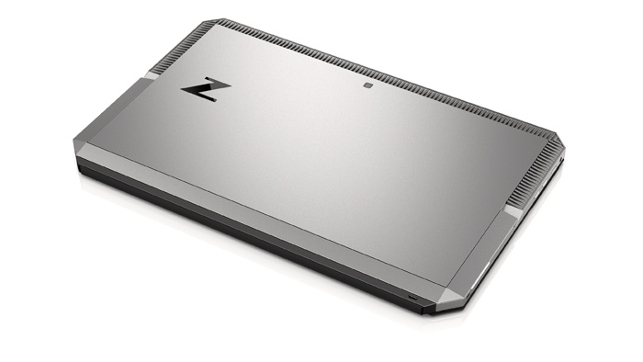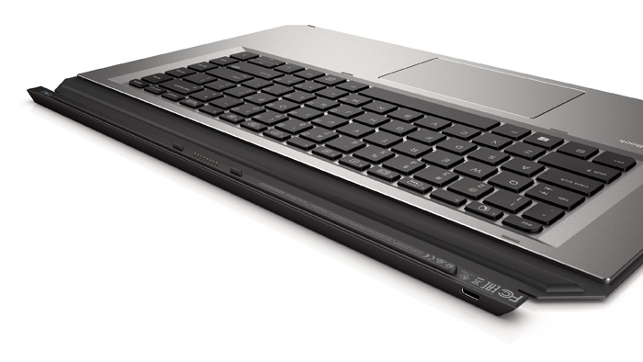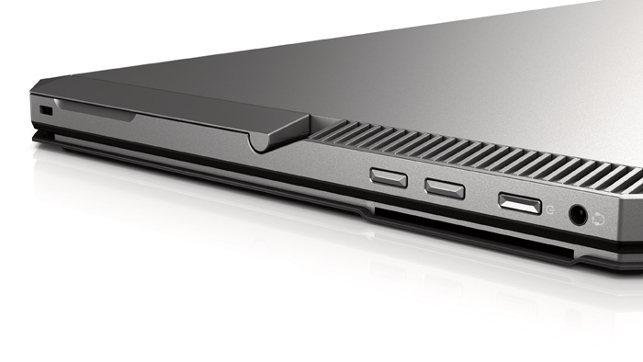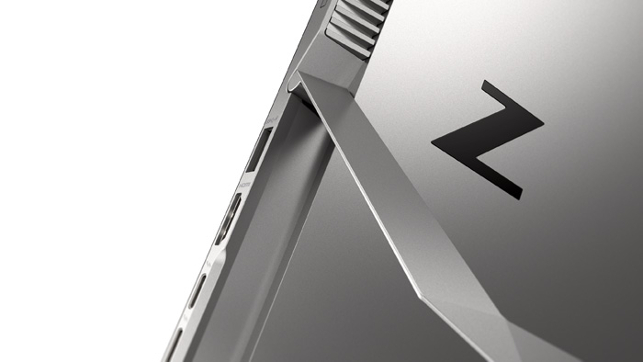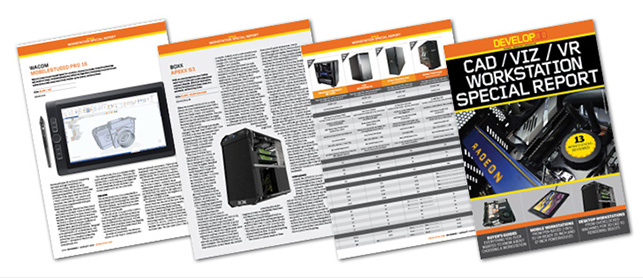The HP ZBook x2 G4 is a detachable 2-in-1 combining Wacom-grade digital pen technology with a Quadro GPU
HP’s workstation division has gone into overdrive recently, introducing several new types of machines like the HP Z2 Mini and the HP Z VR Backpack. None of the major workstation OEMs can compete when it comes to HP’s sheer breadth of products.
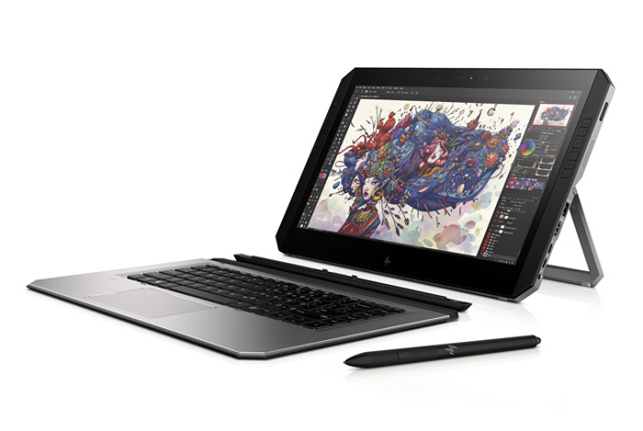
The HP ZBook x2 is another workstation first, a 2-in-1 mobile workstation with a detachable keyboard that can be used in laptop or tablet mode with touch or Wacom pen input to match different workflows.
It’s destined to compete with the Microsoft Surface Pro, except HP is aiming higher. With up to 32GB RAM the HP ZBook x2 can handle significantly more complex datasets. And with an Nvidia Quadro M620 GPU, it boasts up to 73% more 3D performance than the integrated Intel graphics you get in Microsoft’s detachable 2-in-1. Futhermore, as the 14-inch ZBook x2 is a fully-fledged Quadro-based workstation it will also be optimised and certified for the major 3D CAD applications.
So who would benefit from a machine like this? Digital artists, of course, but for product development, it’s designers who might start their creative process with a sketch, then develop their design in 3D without having to change devices. And unlike a desktop tablet like the Wacom Cintiq, which you attach to a workstation, you can take the ZBook x2 anywhere you like.
HP ZBook x2 – product specifications
■ Intel Core i7-7600U 2.8GHz, 3.9GHz Turbo) (2 cores, 4 threads)
■ 32GB (2 x 16GB) DDR4 2,133MHz
■ Nvidia Quadro M620 (2GB) (385.94 driver)
■ 1TB HP Z Turbo Drive G2 NVMe SSD
■ 14-inch UHD (3,840 x 2,160) HP DreamColor. 10-bit, anti-glare & touch
■ 365 x 227 x 20mm / 2.17kg (tablet) 365 x 227 x 15mm / 1.65 kg
■ Microsoft Windows 10 Pro
■ 1 year limited warranty
CPU benchmarks (single threaded) Seconds (smaller is better)
SolidWorks 2015 IGES export (single threaded): 112
CPU benchmarks (single threaded) Seconds (smaller is better)
Luxion KeyShot 6.1 render test (multi threaded): 1603
V-Ray render benchmark (CPU) (multi threaded): 340
GPU compute benchmark Seconds (smaller is better)
V-Ray render benchmark (GPU): 390
3D graphics benchmarks (3D CAD) Score (bigger is better)
SPECapc for SolidWorks 2015 (shaded + edges): N/A
SPECapc for SolidWorks 2015 (RealView + shadows): N/A
SPECapc for SolidWorks (RealView + shadows + AO): N/A
SPECapc for PTC Creo 3.0 (shaded + edges): 2.47 (test run at 4K)
SPECapc for PTC Creo 3.0 (reflection): 2.00 (test run at 4K)
3D graphics benchmarks (design viz) Frames Per Second (FPS) (bigger is better)
LumenRT (hotel model) (FPS): 2 (test run at 4K)
LumenRT (roundabout model): 1 (test run at 4K)
Autodesk LIVE (Villa Enhanced model): 6 (test run at 4K)
Autodesk VRED Professional (AA off): 3 (test run at 4K)
Autodesk VRED Professional (AA medium): 1 (test run at 4K)
Autodesk VRED Professional (AA ultra high ): out of memory
3D graphics benchmarks (VR) Frames Per Second (FPS) (bigger is better)
VR Mark (Orange): 34.69 (VR resolution)
VR Mark (Blue): 6.05 (VR resolution
VR Mark (Cyan): 18.46 (VR resolution)



